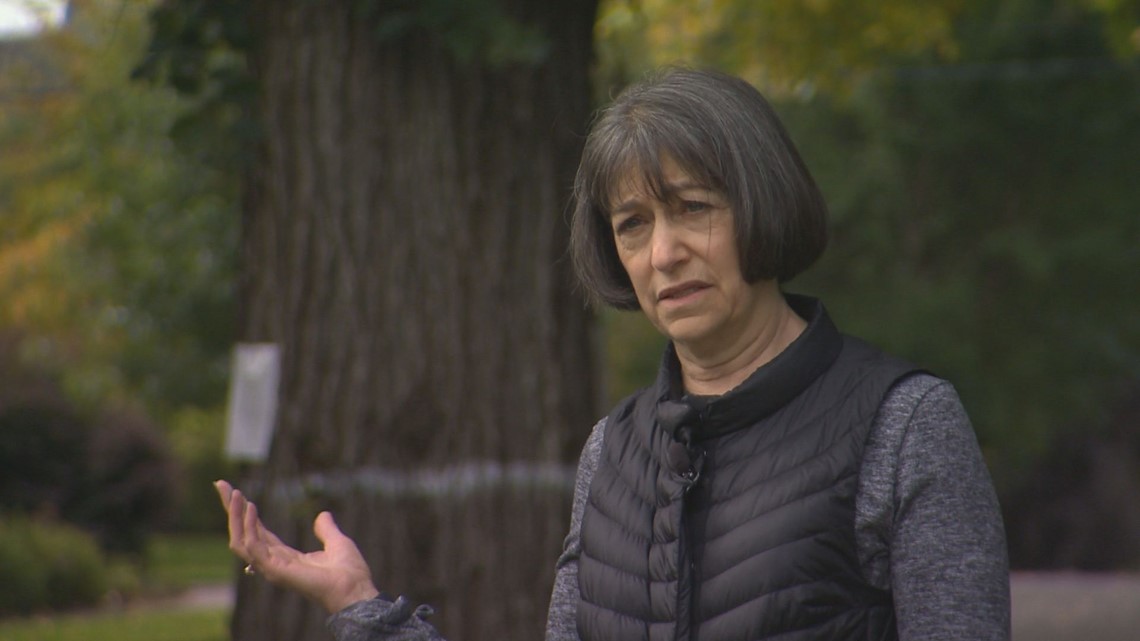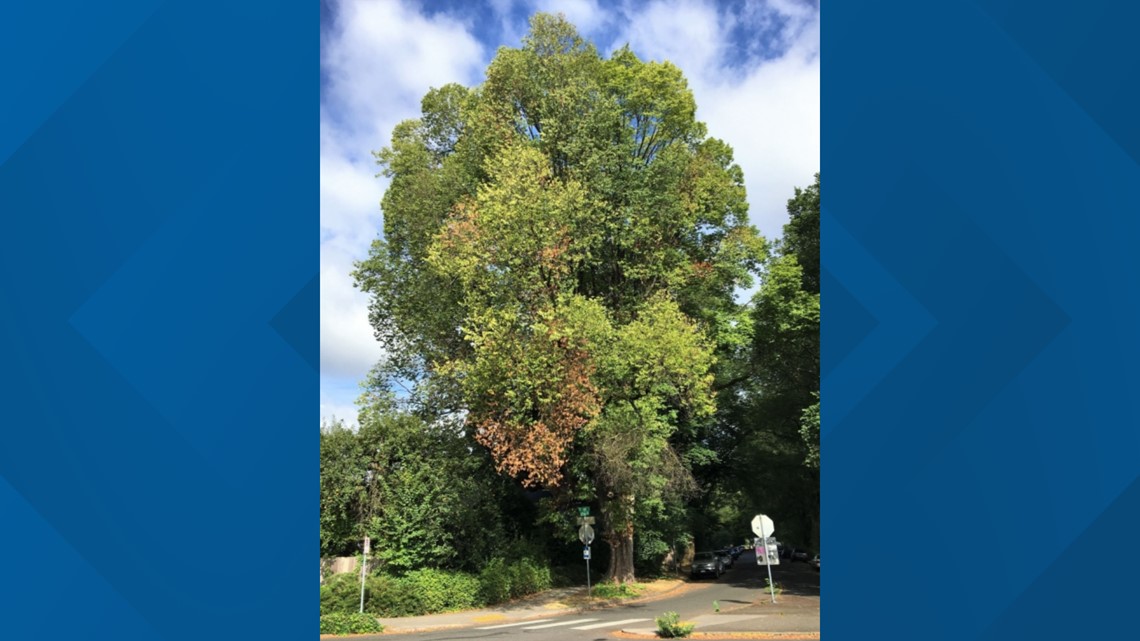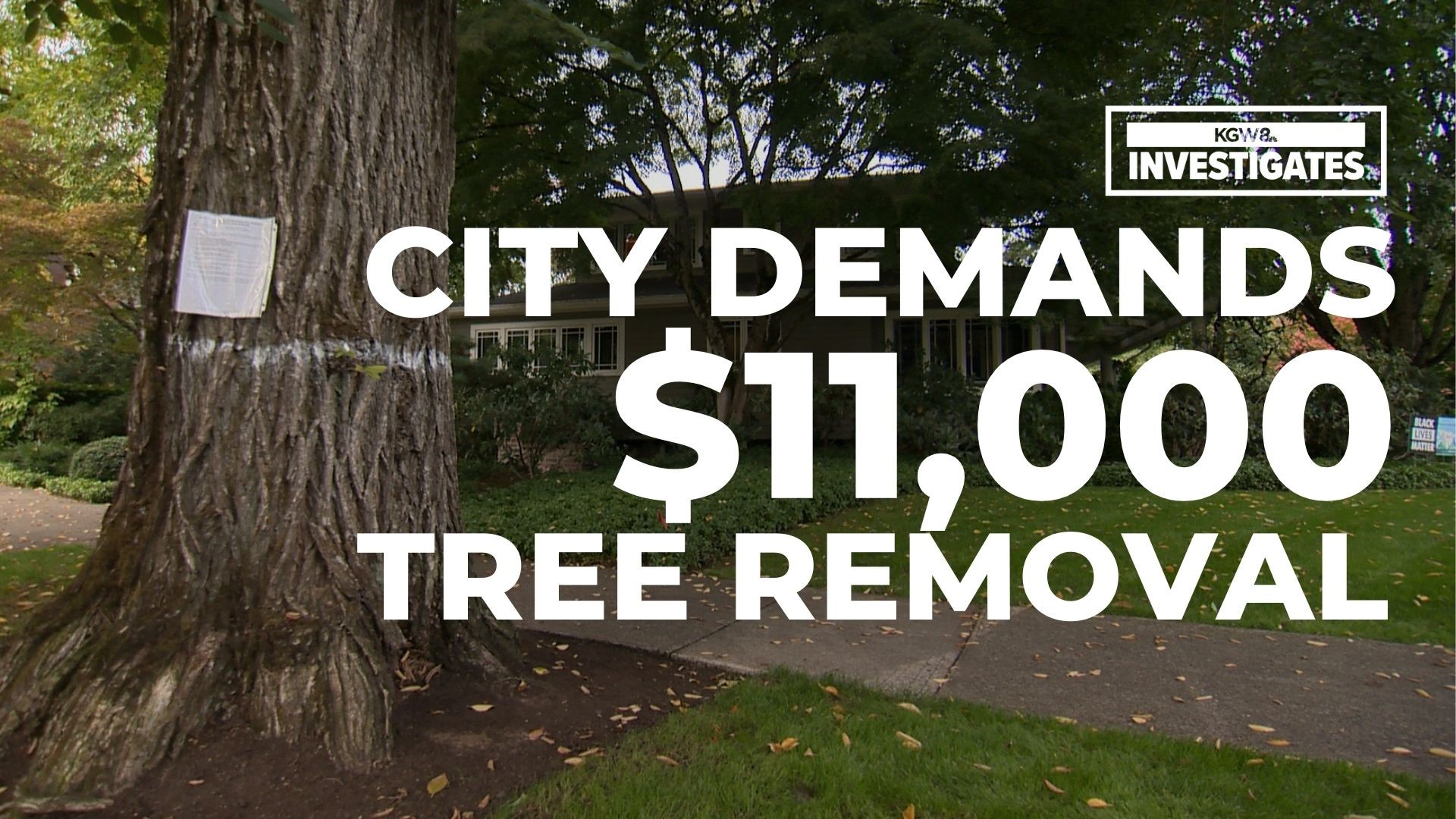PORTLAND, Ore. — The huge elm tree that arches over the street in Southeast Portland has been part of Diane Morgan’s home for decades. It was planted in the Eastmoreland neighborhood long before she and her husband moved in.
So you can imagine her dismay when Morgan noticed someone had unexpectedly spray painted the old elm tree and stapled a sign across the trunk.
“I came home from a meeting and boom!” said Morgan.
Turns out, it wasn’t vandals who tagged the tree. It was the city of Portland, which demanded the tree be cut down because it was infected with the fast-spreading Dutch elm disease. The homeowner was on the hook for the costly removal.
“We find out it is going to be $11,000 to take down this tree,” said Morgan. “I mean, we keep an emergency fund but our emergency fund is not $11,000.”
To make matters worse, the city demanded Morgan act fast because Dutch elm disease is lethal and highly contagious to other elm trees, spreading through the roots of neighboring trees and certain beetles. City code required she remove the tree or sign a contract to have it removed within 30 days.


“I understand why they want to take the tree down, but this is a very tight timeline to do all that and come up with the money,” Morgan explained.
If she didn’t comply, the city threatened to charge her for the cost of removal, along with a civil penalty and a lien placed against her property.
“I felt very pressured,” said Morgan. “They’re calling it a civil penalty. That’s strong language.”
For decades, the city took responsibility and Portland city crews removed street trees infected with Dutch elm disease in the right of way, or that area between the curb and sidewalk.
In 2017, the city changed policy and shifted that cost to adjacent property owners.
“It was part of a budget package that went to city council and city council determined that it’s a more equitable use of the city’s resources to have that code consistently applied throughout the city,” explained City Forester Jenn Cairo.
Portland has approximately 2,300 susceptible elms scattered across the city, with large clusters in neighborhoods like Eastmoreland, Laurelhurst and Ladd’s Addition.
If unchecked, tree experts warn Dutch elm disease would have a catastrophic impact on Portland’s urban forest.
To help monitor elm trees, the city provides free sampling and testing for the disease — that’s how it was determined Morgan’s tree was infected with Dutch elm disease.
“It’s similar to humans having an infectious disease that is fatal or maybe someone’s pets having an infectious disease that is fatal,” explained Cairo.
In 1987, the Portland city council declared trees infected with Dutch elm disease a nuisance and declared a state of emergency for Portland’s elm canopy.


A sudden leaf wilting, browning or drooping, often on a single branch during spring or summer, is a common symptom.
Every year, roughly 40 trees are removed in Portland due to Dutch elm disease. All infected wood must be disposed of by chipping or burying in order to prevent the spread of the disease by elm bark beetles. The fungus invades the tissue of elms and stops water movement in the tree. An infected elm tree can die within weeks of showing symptoms.
For now, there is no known cure, although commercial fungicides can help prevent infection.
Every year, Urban Forestry inoculates roughly 140 elms in parks and on public spaces. It is up to neighbors or neighborhood associations to treat elms on private property, including street trees.
Morgan feels the city is insensitive to homeowners by issuing heavy-handed demands on a tight timeframe.
“It’s just not the right approach,” said Morgan, who wonders why the city doesn’t offer some type of financial assistance.
“Is there not a fund that the city can cough up half the cost of doing this?” asked Morgan.
Additionally, Morgan wishes there was some advance warning from the city that her tree might be susceptible to Dutch elm disease and require costly removal.
“We’ve been in this house since 1983. What if we had decided, ‘We have this ticking time bomb, why don’t we set aside $200 a year?” asked Morgan.

